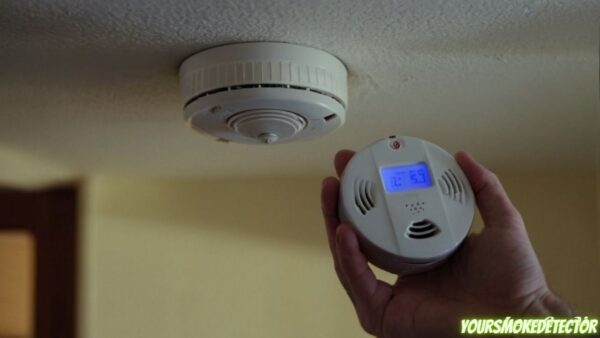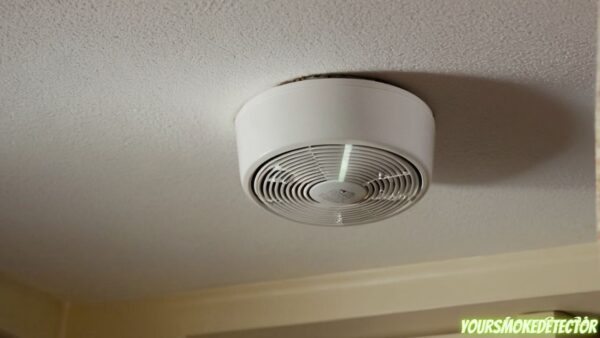The safety of passengers and the integrity of the vehicle are two paramount concerns for any vehicle owner or operator.
Among the various safety devices available, a smoke detector stands out as an essential tool to protect against potential fire hazards.
This ultimate guide will provide you with comprehensive insight into the importance of smoke detectors for vehicles, their functionality, and the best practices for installation and maintenance.
Smoke Detector for Vehicle

1. Why Vehicles Need Smoke Detectors
Vehicles, just like homes and offices, are not immune to fire hazards. The presence of flammable materials like gasoline, oil, and upholstery makes vehicles a potential site for unexpected fires.
Therefore, a smoke detector is vital in providing an early warning against fire threats, thus ensuring the safety of passengers and the integrity of the vehicle.
Furthermore, the compact and enclosed nature of vehicles can cause smoke and harmful gases to accumulate rapidly, making it difficult for passengers to detect a fire in its early stages.
2. The Importance of Fire Safety in Vehicles
The importance of fire safety in vehicles cannot be overstated. From personal cars to commercial buses and cargo trucks, every vehicle is at risk of fire incidents that can cause catastrophic loss.
The primary goal of fire safety is to prevent these threats that can harm passengers, destroy property, and potentially lead to loss of life.
A key aspect of fire safety in vehicles is the installation of smoke detectors. These devices act as the first line of defense against potential fire threats by detecting smoke at the earliest stage, often before a fire can ignite.

They provide a critical window of time for passengers to safely evacuate.
3. Understanding the Functionality of Vehicle Smoke Detectors
The functionality of smoke detectors in vehicles revolves around the principle of detecting particulates produced by smoldering or burning materials.
The two primary types of smoke detectors used in vehicles are ionization detectors and photoelectric detectors.
Ionization detectors operate by creating an electrical circuit between two metal plates. When smoke particles enter the detector, they disrupt this circuit, causing the alarm to trigger.
These detectors are best for identifying fast-burning fires, such as those caused by paper or flammable liquids.
Photoelectric detectors, on the other hand, work by casting a beam of light within the detector. Any smoke particles entering the detector scatter the light, causing it to hit a sensor and trigger the alarm.
This type of detector is more effective at identifying slow-smoldering fires, often caused by overheated wiring or smoldering upholstery.
It’s crucial to note that both detector types have their strengths and weaknesses.
4. How Smoke Detectors Work in Vehicles
Smoke detectors installed in vehicles function just as they do in residential or commercial buildings.
Their primary role is to detect the presence of smoke, a common byproduct of fires. Their operation typically involves two stages: detection and alarm.
In the detection stage, the device senses the presence of smoke particles in the air. Whether the detector uses ionization or photoelectric technology, the principle remains the same: the presence of smoke disrupts a normal condition within the detector, which then triggers the alarm stage.
The alarm stage is characterized by the activation of a loud, piercing sound designed to alert all occupants of the vehicle.
Some advanced smoke detectors may also incorporate flashing lights or vibrating pads to enhance alertness, particularly useful for individuals who are hearing impaired.
Choosing the Right Smoke Detector for Your Vehicle
Choosing the right smoke detector for your vehicle is a critical decision that hinges on several important factors.
Firstly, you need to consider the type of vehicle. A smaller passenger car might be well served by a standard smoke detector, while larger vehicles, such as RVs or buses, may require multiple detectors or more advanced systems.
The type of smoke detector technology, ionization or photoelectric, is another crucial factor. As previously mentioned, ionization detectors are more effective at detecting fast-burning fires, while photoelectric detectors excel at identifying slow-smoldering fires.
It’s often a good idea to choose a dual-sensor smoke detector that incorporates both technologies for comprehensive fire detection.
What to Consider When Purchasing
When purchasing a smoke detector for your vehicle, there are several important aspects to consider that will ensure the best protection against potential fire hazards.
Type of Detector:
As discussed, smoke detectors can use ionization or photoelectric technology, or a combination of both. Consider the nature of potential fire hazards in your vehicle to determine the most suitable type.
Vehicle Size:
The size of your vehicle can influence the number of smoke detectors required. Larger vehicles like RVs, buses, and trucks might require a more complex system or multiple detectors.
Installation:
Some detectors are easy to install yourself, while others might require professional installation. Consider your comfort level with installation, as well as the complexity of the detector system.
Additional Features:
Many modern smoke detectors come with additional features, such as carbon monoxide detection, battery life indicators, or connectivity to larger safety systems. These could offer additional benefits for your specific needs.
Durability:
A vehicle can be a harsh environment for a smoke detector, with wide temperature fluctuations and potential exposure to dust and moisture. Choose a smoke detector designed to withstand these conditions.
Cost:
While your safety should never be compromised due to cost, it’s still an important consideration. Evaluate the cost against the features and reliability offered by the detector.
Brand Reputation:
It’s advisable to purchase from a reputable brand with positive reviews and reliable customer support. This often ensures a higher-quality product and peace of mind in case of any issues.
Certifications:
Ensure the smoke detector you choose is certified by recognized safety organizations, which guarantees that the product meets specific safety standards.
Step-by-Step Installation Guide for a Smoke Detector in a Vehicle
Choose the Correct Location:
Select a location that is central to the vehicle’s interior, preferably on the ceiling, and away from windows or vents that could disrupt the detector’s operation.
Read the Manufacturer’s Instructions:
Always read the manufacturer’s instructions first! They will provide specific, detailed guidelines for your specific smoke detector model.
Prepare for Installation:
Gather all necessary tools for the installation. This often includes a drill, screws or adhesive (depending on the model), and your smoke detector.
Install Mounting Bracket:
Attach the mounting bracket to the chosen location using the supplied screws or adhesive. Ensure the bracket is secure and level.
Attach Smoke Detector to Bracket:
Once the bracket is firmly in place, attach the smoke detector. This usually involves a simple twist motion or snapping the detector into the bracket.
Test Functionality:
After installation, it’s crucial to test the smoke detector to ensure it’s functioning correctly. Most detectors have a ‘test’ button for this purpose.
Regular Maintenance:
Regularly check the detector’s battery, clean it to remove dust or other particles, and run functionality tests to ensure it remains in good working order.
Key Takeaways
Ensuring safety in your vehicle is incredibly important, and a key component of this is the installation and maintenance of a smoke detector.
Importance of Choosing the Right Detector:
The type of vehicle, potential fire hazards, and additional features are all factors that influence the suitable smoke detector for your vehicle.
Considerations for Purchase:
The size of your vehicle, ease of installation, durability, cost, brand reputation, and certifications should all be significant considerations when purchasing a smoke detector.
Correct Installation is Vital:
The smoke detector must be correctly installed in a central location, away from windows or vents. Always follow the manufacturer’s instructions and don’t hesitate to seek professional help if needed.
Regular Maintenance is Crucial:
Regular checks on the detector’s battery, cleanliness, and functionality ensure its effectiveness in alerting to potential hazards.
Why Do Smoke Detectors Turn Yellow



